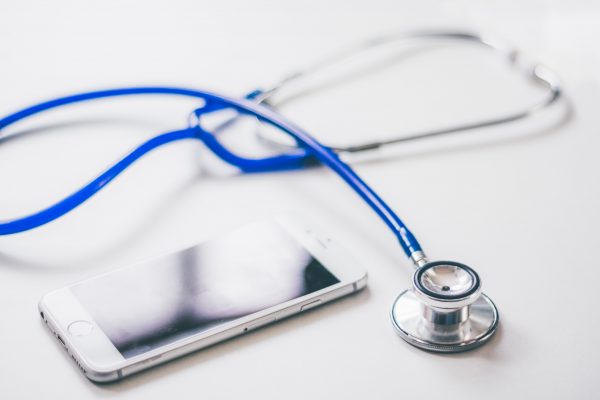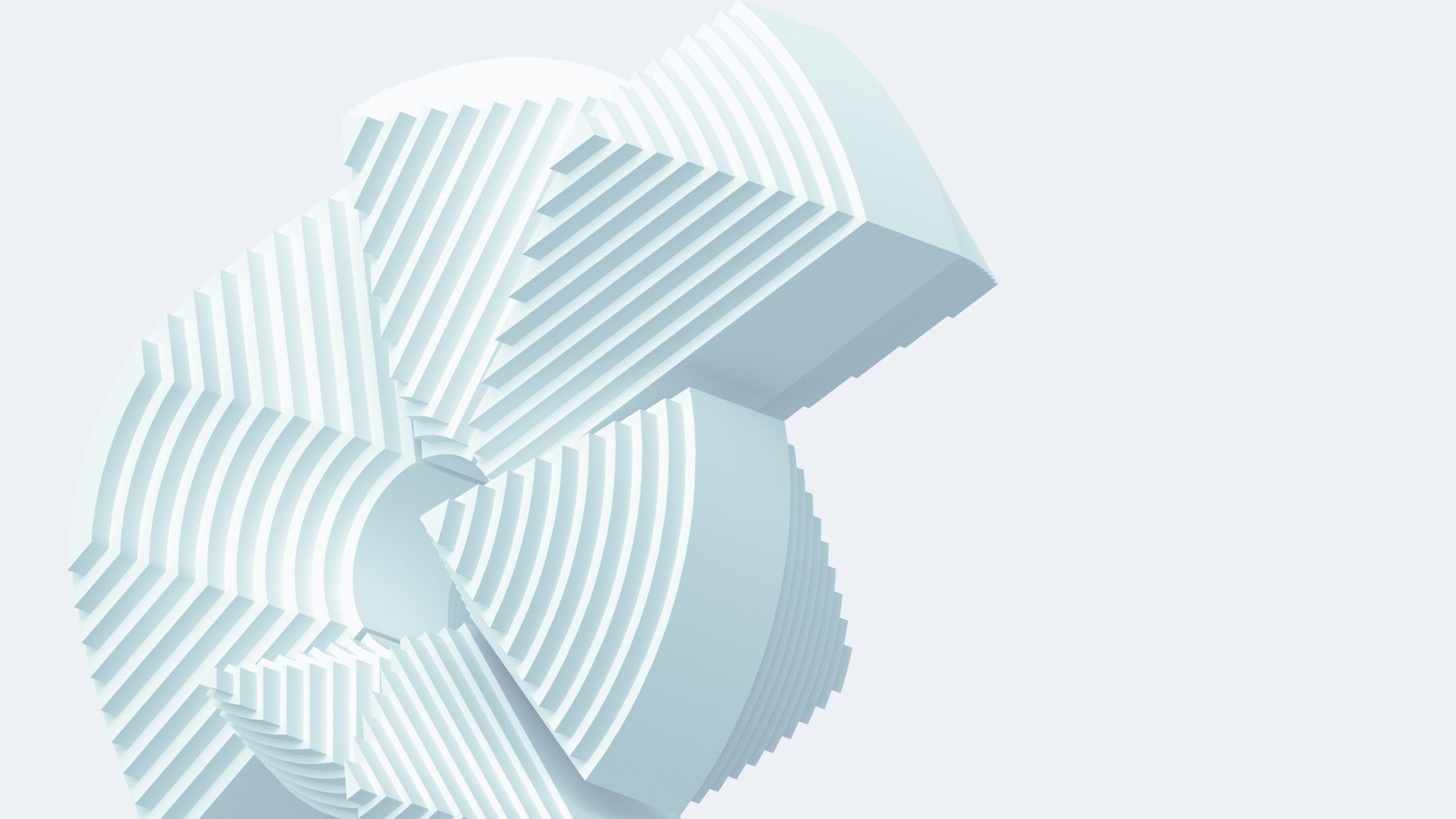The Internet of things (IoT) solutions coupled with artificial intelligence (AI), machine learning (ML), and deep learning (DL) streamlines wireless patient healthcare monitoring, enabling effective data collection, transmission, and analysis. But only cost-effective, reliable security solutions can expedite remote patient healthcare monitoring worldwide.
Overview
In the last decade, AI and the Internet of Medical things (IoMT) applications in the healthcare sphere increased. Such technologies assist the medical sector as an effective tool for data management, remote patient monitoring (RPM), surgery, supply chain management, patients’ physical state analytics, and other domains. COVID-19 pandemic forced healthcare organizations to boost their AI, ML, and IoT efforts.
But there are some issues, considering AI and IoT, affecting healthcare organizations. The main reasons are security issues, these solutions are expensive, and compliance with all worldwide regulations (HIPAA, GDPR, FDA, etc.) is also needed. That is why C-level managers of healthcare providers hesitate to apply disrupting technologies into healthcare practice.
Why do medical facilities hamper AI and IoT solutions?
Embedded devices contain patients’ sensitive information. Cyberattacks, data leakage, and other security issues can cause unnecessary judiciary problems for medical organizations. All new technologies need specific infrastructure, technical, technological, and medical personnel preparation, hardware, and software for seamless workflow 24/7 support. The development of IoT and AI solutions in healthcare needs to be HIPAA, GDPR, and FDA compliant. It takes much more time to absorb and integrate these requirements into practice. So managers compare the costs and benefits of paired AI and IoT solutions implementation and choose previous technology usage.
Let’s observe the security issues considering IoT solutions in healthcare. According to Hospital & Healthcare Management Magazine, “cyber attacks on the healthcare industry have increased dramatically over the last 18 months – more than doubling in 2020 alone – with small hospitals among the most at-risk due to limited technical, human, and financial resources to combat cyber threats.”
This article also states that small hospitals face unique challenges, often with limited IT budgets and staff. However, they need to provide the same level of patient care, security, and compliance as larger hospitals and health systems.
In these conditions, any hospital should bear in mind security issues and assign a certain amount of resources to resolve this problem. These resources can be human, financial, technical, and technological ones. So the healthcare providers’ management balances between cost and required protection from cyber attacks, ransomware, and data leakage.
What about the costs of IoMT implementation?
Hospital management spends a certain amount of money on every part of healthcare providers’ daily activities, whether its a patient care, security, supply management, or disruptive technologies implementation. Proportions may vary, but general tendencies show that healthcare expenses increase every year at a faster pace.
According to Peterson and Kaiser organizations in the US “by 2000, health expenditures had reached about $1.4 trillion, and in 2020 the amount spent on health tripled to $4.1 trillion. Health spending increased by 9.7% from 2019 to 2020, much faster than the 4.3% increase from 2018 to 2019.”
Considering the new reality, healthcare providers try to implement less costly solutions. Carrying out of newer technologies, such as AI and IoT, suppose allocation of extra investments by medical organizations.
The IoT in healthcare perspective
The global Internet of Things (IoT) in healthcare market size is expected to grow from USD 72.5 billion in 2020 to USD 188.2 billion by 2025, at a Compound Annual Growth Rate (CAGR) of 21.0% during the forecast period. Key factors driving the growth of the IoT in the healthcare market are the rising focus on active patient engagement and patient-centric care, growing need for adoption of cost-control measures in the healthcare sector, and growth of high-speed network technologies for IoT connectivity, and increasing focus on patient-centric service delivery through various channels.
In accord with Ajay Kapoor from The IoT Magazine: “To successfully implement IoT application development and get its complete optimization, stakeholders must make it profitable. Otherwise, it will always remain out of reach for everyone except high-class people.”
The author also states that “the situation is so critical that it gave rise to “Medical Tourism” in which patients with critical conditions access health services in developing countries, which cost them less than a tenth.” [4]
Healthcare provider management should carefully prognose their cash flows after implementing each innovation in AI and IoT spheres choosing optimal technical solutions.
Remote patient monitoring solutions
One of the most cost-efficient IoMT solutions for healthcare organizations is remote patient monitoring systems. Those systems consist of hardware and software sections. Hardware is sensors, local data storage, servers, smartphones, PC, laptops, tablets, and other devices. The software comprises mobile applications, hospital monitoring software, and cloud servers. Such systems are based on virtual care. Healthcare providers set at patients’ home devices or equip them with different sensors, i.e., PPG, ECG, etc., which can measure, e.g., blood pressure, blood oxygen saturation, sweat level. Sensors send data to a mobile app during the day. Users can control health parameters using their smartphones. Hospitals have access to such information, and physicians assist customers with recommendations.
The easy-to-digest scheme of remote patient monitoring can be shown as follows:

ECG IoT-based detectors
Several companies suggest Electrocardiogram (ECG) sensors as a trivial solution for real-time health monitoring, mainly for Cardiovascular diseases (CVD). Those sensors can detect electrical heart activity. Electrodes wired to devices must be placed onto the patient’s limbs and chest. The number of electrodes may vary: 3-lead, 5-lead, and 12-lead types are the most popular among cardiologists: the more electrodes, the better the accuracy of the medical research.
The ECG will then detect the ionic current flow in the heart which causes the cardiac fiber to contract and afterward relax, in the form of the time-varying signal and plotted as P, Q, R, S, and T waves.
3-lead ECG monitoring portable device consists of three electrodes (RA, LA, and LL). RA must be set under the right clavicle near to right shoulder of the rib cage. LA must be located under the left clavicle close to the left shoulder of the rib cage, and LL must be on the left side below the lower edge of the left rib cage muscles. [5]
Nowadays ECG remote patient monitoring systems have become more comfortable for users and local hospitals to track day patients’ heart activity.
But a few specialists have certain concerns about ECG usage in medical practice. For instance, Mohamed Adel Serhani, Hadeel T. El Kassabi, Heba Ismail, and Alramzana Nujum Navaz admit the following:
The ECG signal recording differs in some ways depending on the type and number of electrodes used. It is, therefore, necessary to further explore the suitability of this recording principle for disease diagnostic purposes. Different diseases require different types of recordings, which should be supported by the selected electrode. Another design challenge is related to the patient’s comfort with sticky electrodes.
According to Husain, Khaleel & Zahid, M. & Hassan, Shahab Ul & Hasbullah, Sumayyah & Mandala, Satria another problem is security. ECG data contains sensitive information and hackers could use this information to abuse patients. Several ways could be used to steal the ECG data from monitoring systems. Hacker close to the patient can intercept the ECG data transmission between sensors and the patient’s smartphone.
Smart clothes with embedded sensors
The most elegant solution for remote patient monitoring can be “smart clothing”. Sensors are embedded into the patient’s clothes. Clever detectors record customers’ daily activities and collect this information in the local storage while the user wears a dress and contacts with customers’ skin. Then they transmit this data using the same principle as ECG or any other sensors.
The demand for smart clothes with embedded computing devices is slowly rising, but it is hindered from mass adoption due to delicate sensors that cannot withstand sweat, machine washing, and extremes in temperature.
Ryan Harbison, a research analyst at ABI Research, says, “Before smart clothing reaches mass adoption, the technology behind its embedded sensors needs to improve.”
He also admits: “The sensors have to withstand conditions that other wearables don’t, such as body sweat, wash cycles, and extreme temperature variances. Vendors will have to solve this through innovative manufacturing and do so before consumers voice these concerns.”
Let’s face other issues. One of them is the ability to work correctly for a short period of time.
Most smart clothing products currently feature detachable sensors that must be removed before washing. If they are not removable, they must be washed with the garment, and even the most advanced sensors only last for 60 to 70 washes before needing to be replaced. [7]
One of the major challenges that lay in the way of widespread adoption was cost. Manufacturers weren’t able to offer IoT-integrated solutions at a price that was appealing to the mass market.
How can PPG sensors benefit AI and IoT?
A photoplethysmogram (PPG) sensor is another solution for RPM. A photoplethysmogram is an optical technology, which can be described as follows. A unique medical device, called a pulse oximeter, measures blood perfusion by lighting up the skin and registers light absorption changes in blood vessels and subcutaneous skin tissue. This scientific knowledge allows using PPG sensors for remote patient monitoring. They can detect changes in blood pressure, tissue oxygen saturation, and other indicators.
This IoT solution is better than ECG sensors because it’s much more comfortable for the wearer. PPG sensors can measure more parameters than ECG and e-textile detectors. For instance, PPG detectors can assess such health indicators as pulse rate, respiratory rate, blood pressure, and oxygen saturation level.
Customers can put sensors in one place on the skin and wear them like a smartwatch on their wrist. ECG sensors need to be placed at least in three different areas. One of the primary intelligent clothes sensors’ downsides is their limited usage due to the number of washes they can withstand.
PPG detectors cost much less than other sensors. This is the main reason why they are a better solution for RPM.
The only serious downside of PPG is different artifacts, i.e., noises, movements, etc., creating false data sets. But this disadvantage can be eliminated by programming features.
PPG application in healthcare
PPG is a noninvasive, low cost, and simple optical measurement technique applied at the surface of the skin to measure physiological parameters. Scientific interest has continued to look beyond the pulse oximetry and heart rate calculation, and more into the potential applications of PPG sensors. It is now well known that the second derivative wave of the original PPG signal contains important health-related information and the analysis of this wave could lead researchers, clinicians, and health-care providers to the early detection and diagnosis of various cardiovascular diseases typically occurring later in life.
Each embedded medical device connected to the Internet or other network is affected by malware, hackers, or anyone else, who can access sensitive patient’s health information. Healthcare providers should consider this factor because reputation costs may be much higher than security ones.
The application developed using IoT resolves security issues in such a way:
- Communication with the application programming interface (API) is done over the Secure Sockets Layer (SSL). API stands for the connection between hardware and software, and SSL is a technology that enables secure connection and sensitive data protection from criminals intervening between two systems.
- No identifying information to be saved.
- Automatic BLE pairing must not happen. The device must first be set to pair with the application. Once it is paired, the connection is considered secure.
- The application must authenticate using a ticket made out of the profile permit, an application identifier, and day. They are valid for 1 hour more or less, so when a token is stolen, it provides access only for a limited period of time. These conditions mean that clocks must be synchronized between the server and the application.
- Invitation tokens expire after using once or after 24 hours.
- The API checks the validity of the tokens before taking action.
- A security log must collect all security-related events on the API.
- The services must comply with HIPAA, GDPR, FCA, etc.
According to Irene Ioannidou and Nicolas Sklavos: “As the demand for consumer wearables, including smart bands and fitness trackers, is rising, serious concerns over data privacy and security issues are coming into the spotlight.”
Callum Cyrus admits that: “By fusing each of the privacy AIoT and Wi-Fi sensing technologies, customers are expected to be able to reduce the usage of line-of-sight technologies like computer vision which risk jeopardizing user privacy.”
In the end, Irene Ioannidou and Nicolas Sklavos have summarized: “Protecting personal data is a critical challenge for smart devices and IoT systems and should be a primary concern of both software and hardware design and development.”
Connected devices are always a potential risk, so it’s imperative that healthcare institutions do everything they can to stem the flow of malicious attackers. To ensure this, a multi-layered security approach is needed to reduce these threats.
Healthcare providers’ management analyzes any innovative idea, any investment from the point of profitability, payback period, and efficiency. At the same time, the main task of medical organizations is to provide healthcare services of good quality. Any viable healthcare solution is an intersection between the two mentioned above conditions.
Millions of patients’ real-time health monitoring require inexpensive, easy-to-use, and comfortable solutions. Let’s compare PPG, ECG sensors, and smart clothing from the pricing point.
PPG sensors are much cheaper than ECG detectors. For instance, a PPG device MAX30100 Heart Rate Sensor Pulse Oximetry Sensor Module For Arduino STM32 R3 costs roughly $10 at Renhotec Group. In the meantime, an ECG sensor ECG/EKG/EMG Shield Heart Rate Muscle Sensor Meter With Cable And Electrodes costs around $34. PPG detectors are cheaper because they don’t need additional cables and electrodes for proper use as it’s required for ECG meters.
Smart clothes cost more than usual clothing. As fibre2fashion.com admits that:
In general, due to the extra costs required to embed technology in smart clothes, they’re pricier than traditional clothing. For example, a regular jacket may retail for around $100.
However, a similar style smart jacket could set you back anywhere between $200 and $500, depending on the brand. As with most tech products and fashion items, older smart clothes models will decrease in price as newer ones come out.
Nowadays PPG technology is included in many modern affordable devices such as smart phones, smart watches, tablets, bracelets, rings, etc. It is a simple technique with low cost and gives us health-related information such as HRV, blood oxygen saturation (SpO2), blood pressure, and respiratory rate.
IoT devices paired with AI-driven software must demonstrate high efficiency, good functionality, and excellent synchronization between hardware and software. Each method of remote patient monitoring is different, but principles of relevant interoperability between equipment and program are almost similar.
How the application layer works
An application layer is an abstraction layer that specifies the shared protocols and interface methods used by hosts in a communications network.
The device and mobile application communicate with the device using a unique protocol over BLE. The protocol, specified in a different document, allows the application to initiate all the required transactions, and the device responds as needed. When a communication transaction is over, the last receiver acknowledges receiving the information.
The mobile applications and the administrative website communicate with the API using HTTP requests. The API responds in HTTP status codes and data as JSON.
Deployment view
The system’s deployment is effortless and can be on one server, but it scales to allow the handling of significant traffic and scale in the future. Because the API is stateless, it can extend vertically. The diagram below describes this.

Compatibility of any new technology with existing product design is crucial to expedite adoption.
Many medical devices already contain some form of connectivity with the IoT systems built into these products that are currently receiving and generating data but still need to be charged with wires or batteries. With wireless power, any of these existing devices could go from needing to be charged and constantly plugged in to being smart and powered over the air.
IoT application for remote patient monitoring
There is one Israel company which has presented a wireless IoT solution for real-time patient monitoring. A real-time health monitoring system captures, analyzes, and decodes patients’ vital signs and psychological behavioral patterns.
The solution embraces hardware, software, and interconnections between them. There are five main parts of the IoT system of this product: wearable devices, Android and iOS mobile applications, API cloud servers, hospital workstations, and the admin area.
Wireless gadgets could be patches or wristwatches. Users can be equipped with one lead ECG (patch only). Devices have embedded PPG sensors. Those detectors collect data hundreds of times per second and send it to the real-time medical monitoring system.
This real-time monitoring solution opts for any healthcare provider regardless of its size or location. It assists doctors, patients, fitness-oriented people in physical state tracking.
Users can invite other people to connect with them via this app or share their results using social media, messengers, and emails.
How the RPM solution reduces costs
As was mentioned above, PPG sensors are three times cheaper than ECG sensors and more than ten times cheaper than intelligent clothing. But the least has another use, so it is necessary to compare a standalone detector woven into clothes with a PPG indicator. So PPG sensors are more beneficial for the mass market. It means that any hospital can use them to track patients’ health.
Israel real-time patient monitoring systems are convenient tools for customers and hospitals. Patients wear comfortable gadgets. A device contacts skin in one place, e.g., wrist, and it doesn’t interfere with daily patient activities.
Customers can wear those wristwatches or patches for months and even years without a recharge. It is possible because of Bluetooth Low Energy (BLE) technology which saves battery life. This solution is an additional bonus for users, saving time for a recharge.
More healthcare parameters to track
The company’s IoT-based monitoring system is an AI-driven product. It tracks customers’ health status using 13 different performance indicators. The list of parameters is the following:
- Blood pressure
- Respiratory rate
- Blood oxygen saturation
- Pulse rate
- Heart rate variability (HRV)
- Stroke volume
- Cardiac output
- Cardiac index
- Pulse pressure
- Systemic vascular resistance
- Mean arterial pressure
- Sweat level
- Skin temperature
Lots of performance indicators mentioned above allow doctors to analyze patients’ healthcare conditions much better than other solutions with fewer parameters. Indicators supplement each other and give a more vivid picture of the patient’s physical state than ECG and innovative clothing IoT solutions. Customers can also monitor their health using mobile apps and establish standards recommended by their doctors for each parameter. Hourly, daily, weekly reports are available to them and for physicians and medical personnel at the hospital. Such a real-time monitoring system accompanies an almost unlimited number of patients.
Healthcare data records are protected with SSL and special encryption to eliminate malware, cyber-attacks, and other criminal activities. The solution is compliant with GDPR, FDA, and HIPAA. Retrieved information gets to the local smartphone storage and the cloud server.
AI prevents serious diseases
Established healthcare standards for each patient, 24/7 health data collection and monitoring enable “big data” analysis using AI, especially ML and its subset DL. The results of such evaluation signal for doctors, who track day patient’s health at the hospital, about the risk of cardiovascular diseases at the early stages. So AI provides physicians with all necessary tools to alert patients about changes in their vitals.
Customers can view recorded data and set alarm alerts and medication reminders. They can accept or snooze them.
AI works well when reliable and flexible decisions are needed. The mobile app has features adjusted for those who do fitness. They choose the particular mode in their application for this reason.
A large amount of generated and securely stored data allows doctors via AI tools to assess the main tendencies, trends not only for one specific patient or for the group of patients, but also for everyone connected to the system. Medical specialists via Deep Learning’s assistance build-up forecast to prevail health issues for every patient beforehand.
With significant developments occurring in the last decade in terms of data processing and analytics, AI can provide new and sophisticated tools that could help us to better understand disease processes, which ultimately should translate into better patient care and outcomes.
Conclusion
Despite security, compliance issues, and cost challenges for IoT and AI adoption in real-time health monitoring within medical organizations, hospital management continuously searches for relevant, innovative ideas. Implementing vital signs tracking using PPG sensors regardless of their limitations shows more reliable results and fully uncovers AI capabilities for patients, doctors, and healthcare providers.
But only custom-made secure and regulations compliant remote patient monitoring solutions from experienced healthcare developers can optimize costs and streamline healthcare services.








